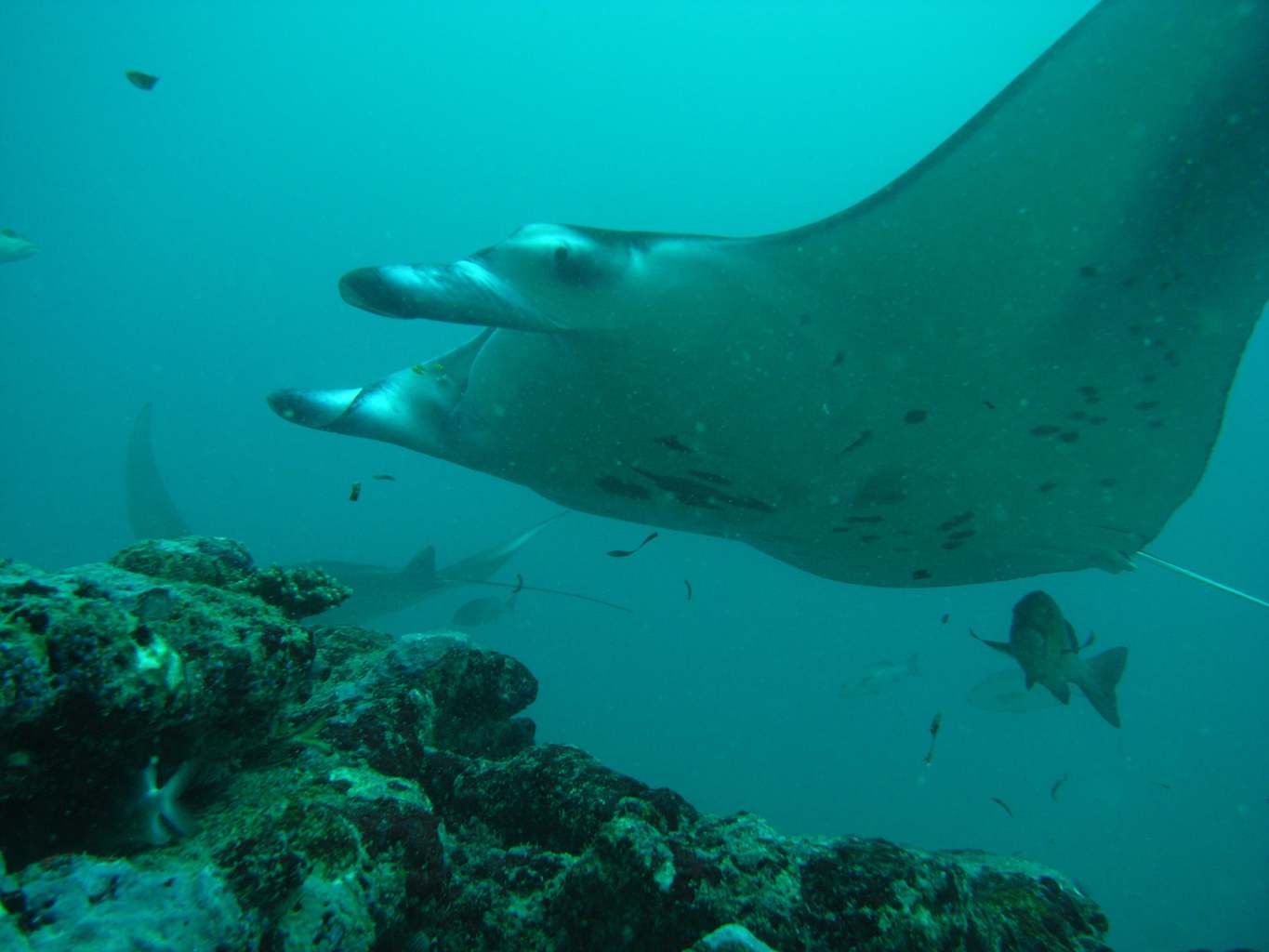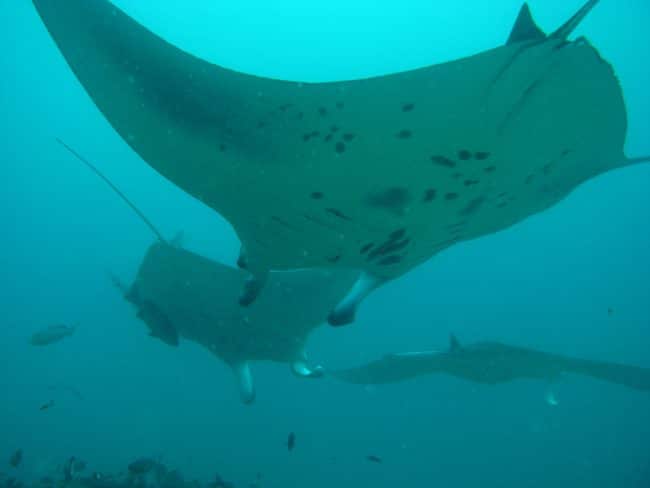
The Maldives evoke turquoise atolls, white sandy islands emerging from the crystalline waters and simply the word paradise. For many, getting a glimpse of this beautiful country is a once in a lifetime experience deserving of unique celebrations such as honeymoons. But there is much more to this tiny country than pristine islands.
The government has realized in recent years that it is critical for the continual preservation of its eco-system to ensure marine life is protected. This includes not only the fish and other living creatures but also the corals.
Aside from coming in search of peace an relaxation tourists come to the Maldives for its marine diversity and top notch diving and snorkelling possibilities. It would be foolish not to take care of these natural wealth for future generations.
At 5,000, it is estimated that the Maldives has one of the largest populations of mantas. To date, around 3,000 have been identified and new ones are found every day. What makes the Maldives even more unique is the fact that the local population rarely leaves the country usually only traveling across atolls.
One of the most famous phenomena can be seen close to Hanifaru atoll where a very large number of mantas and whale sharks can be seen feeding close to the surface in what is a unique sighting.
Two resorts have come forward to support the Manta Trust efforts in the Maldives, the Four Seasons and the Six Senses Laamu, which I recently visited, and which hosts a team from the Manta Trust.
Six Senses participation is not surprising given the chain’s commitment to the environment and it philosophy to use local foods, slow cooking methods, fresh ingredients and environmentally friendly practices which in this case, extends well beyond the resort and onto the neighbouring marine life.
A team from international organization Manta Trust has been surveying and documenting the life and movements of a large colony of mantas that seem to have taken a liking for a cleaning stations only 15 minutes from the resort. The team dives once or twice a day in search of new members and catalogues their findings in the project’s database.
As a guest at the resort you get the chance to join the team and swim with these elegant creatures. Diving with mantas is a truly magical experience.
The team explained that there are two other islands where mantas can be found and they are tracking the movements of the catalogued animals across all the three locations.
However, it seems that the large group of already 75 identified mantas found in Laamu atoll do not move very far and are usually always around the cleaning stations nearby. Some of the animals are seen daily and sightings are almost guaranteed.
Getting there is relatively easy as it is a short boat ride from the resort’s dive center but the dive requires a skilled diver because of the very strong currents and swell that are usually present.
We were required to dive with a resort’s dive master prior to our dive with the mantas and, as a Maldivian legal requirement, we had to refresh all the dive skills that you are taught diving your Open Water course. Only after we had proved that we were experienced divers did we get the green light for the manta dive.
After a briefing and instructions from the crew we jumped in. We had to descend very quickly to around 20m and then swim against the swell for about 10min before we reached the first cleaning station. There are three stations where sightings occur and on our first one we already saw a few of these beautiful creatures.
It was a very tough dive. The swell kept pushing us away in a repetitive rythm and I could hardly hold onto some corals and rocks not to be taken away every 2-3 seconds. We ran out of air after just 25min because of the strenuous efforts required to fight the ocean. Needless to say, the efforts were well worth it.
For the few minutes that I could hold onto something and watch them I realized how gentle and friendly they are. They played with us and seem to like swimming very close rapidly turning at the last minute to fly above us. Michel, a male manta that is regularly seen at the cleaning station, is a playful and very curious manta.
The team told us that he often comes out to parade in front of visitors and that they see him almost every day. Although we had a GoPro with us recording was challenging given the very strong swell.
Guests are encouraged to take their own underwater cameras and equipment or rent it from the resort’s dive center and if they spot a new uncatalogued manta they get to name it.
In order to recognise them the team has recorded the dots and marks on their bellies which are unique markings to each individual animal. A total of 74 mantas have been recorded this year, the first year of operation in Laamu, at the nearby cleaning stations.
Because the team is onsite for a few months they are available to chat to guests and share their knowledge anytime and they offer talks about turtles, dolphins and mantas a few times a week so you not only get to participate in this amazing spectacle of nature but can also find out more about their whereabouts, their migration patterns and other curious facts.
It is through this educational efforts that guests can gain valuable sensibility towards these creatures and maintain appropriate behaviour in future sightings. I was lucky enough to see mantas also in the Komodo archipelago of Indonesia but the crew and dive center was not as prepared and knowledgeable about these creatures.
Mantas are intelligent and evolutionary advanced creatures and can decide to give birth to an offspring only if they feel the environment is safe and conducive to their development. The little ones remain inside the mother’s womb wth their wing tucked in until birth and are quite large from early age.
Laamu has a few youngsters but their size is not far from adult’s so even if you get to spot them they are pretty grown up. The population can go on for years without any growth if the weather and environmental conditions are not right. As one of the largest marine creatures their predators are only the very large sharks or humans.
In recent years, Chinese and other Asian traditional medicine practitioners have started to promote manta’s wings as cure for several ailments prompting an illegal trade of these creatures. Other than that, mantas are usually caught by large fishing nets as a byproduct of their fishing efforts.
Once you see them in the wild and get to swim with them you have a true appreciation for their elegance and gentleness. It is surely one of the most magical moments of a trip to the Maldives, able to compete with the memorable sunsets, the picture perfect over water villas or the cerulean waters.
If you’re unsure whether you want to stay in the Maldives or Bora Bora, I have written a comprehensive article on this topic which has an interactive guide that will help you personalise your choice. Read on for which to choose Maldives or Bora Bora.
